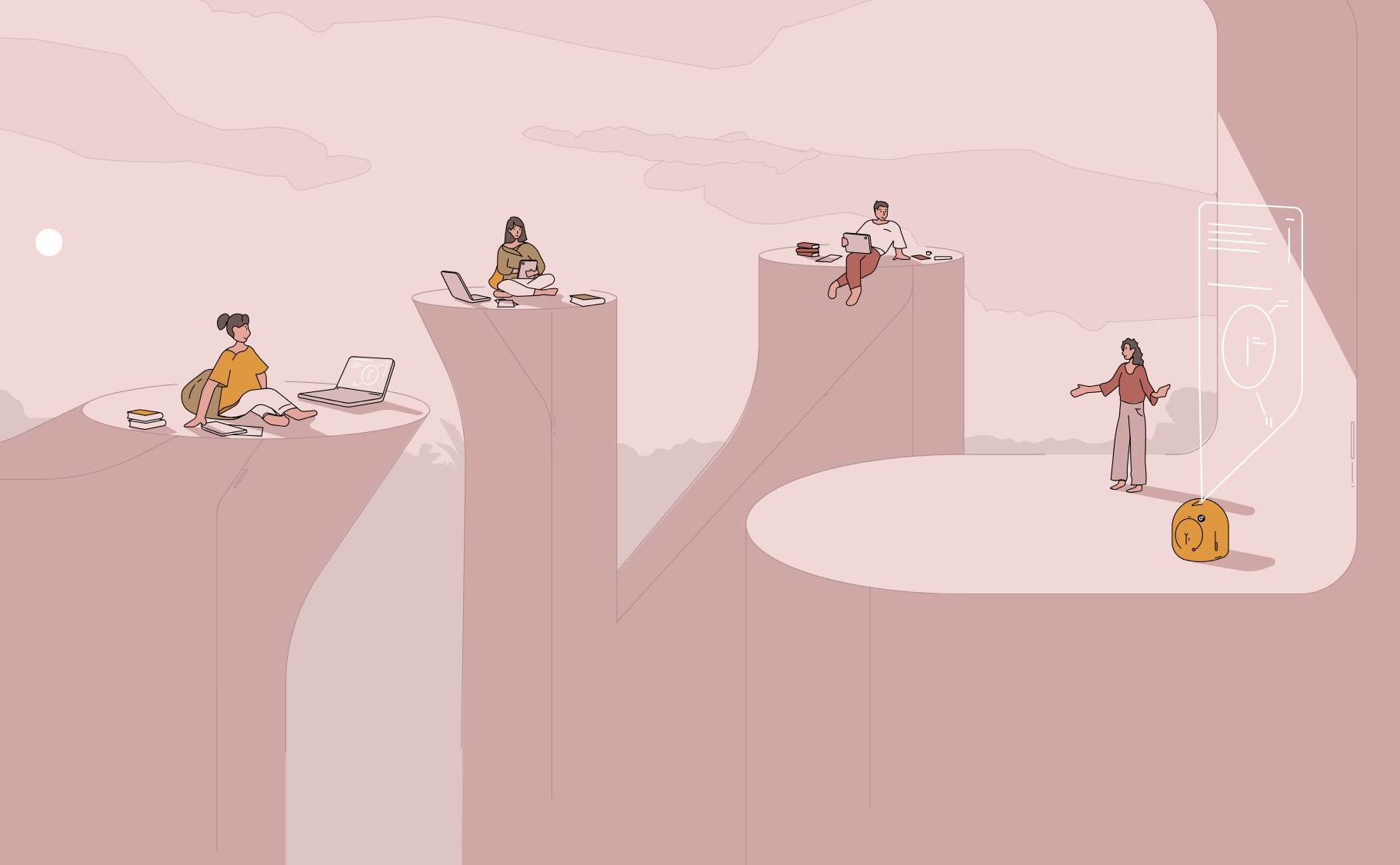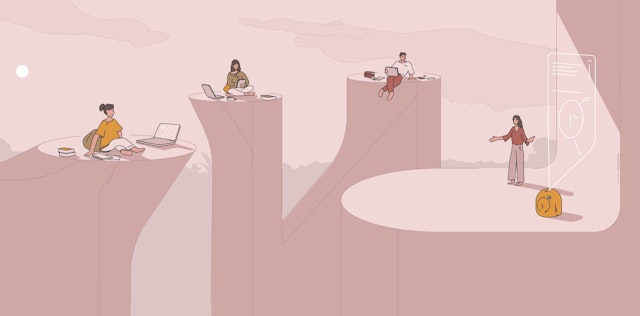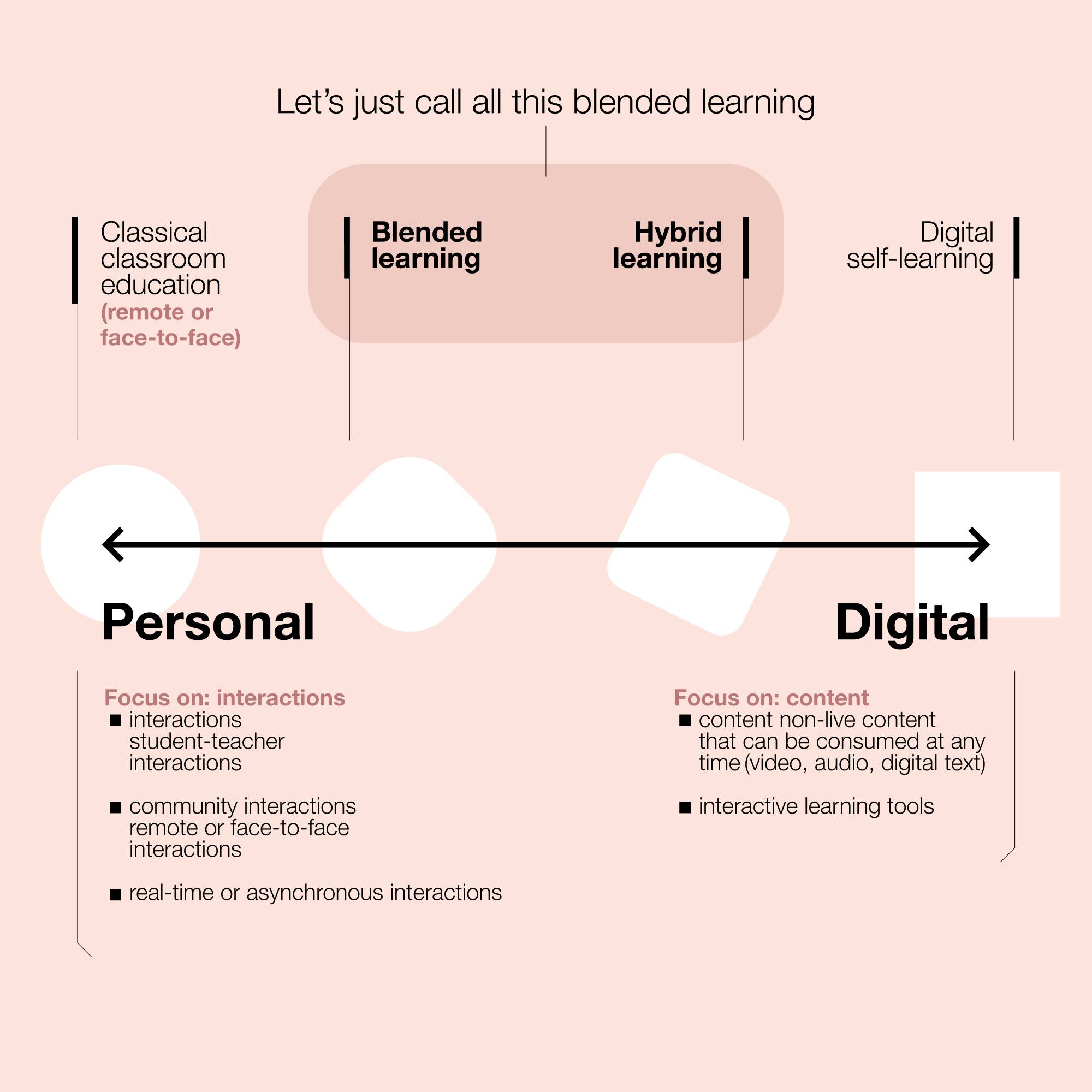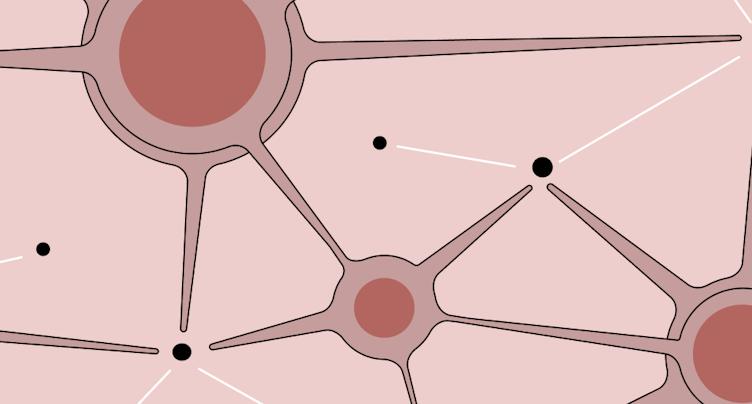share this post on


04 August, 2021
How we digitalise education will define the future of our society
Digitalisation in itself is neutral: it is neither good nor bad. It can lead to frustration and alienation or alternatively, it can enrich lives and promote equal opportunities. We aim to make digitalisation a powerful driving force towards a sustainable society that promotes well-being in every area of life. That’s why we are naturally drawn to exploring challenges in the field of education. This is the domain where getting the digital transition right will be crucial for laying down a strong foundation for a society headed to exist in a novel, blended reality.
Why is blended learning important?
Even in the midst of the current rapid digital transformation, most will agree that the teacher’s role as facilitator/mentor is a quintessential one in the learning process. Blended learning methodologies aim to maximise efficacy and student engagement by leveraging technology to various extents while retaining student-teacher interaction and group interaction as central elements.
Educators became interested in using digital tools to enrich the learning experience as soon as the early 2000s. Even so, while the number of exciting experiments increased each year, education itself as experienced by the masses stayed surprisingly unchanged. Moving away from its trailblazer role at the advent of the internet, education gradually became a reactive field to technology: when social changes made some overhaul unavoidable, it reluctantly started to answer. While fully online learning has its own poster boys – Udemy, Coursera, Khan Academy, etc. – blended learning doesn’t offer similar household names. Well-known LMSs (Learning Management Systems) and video call software such as Google Classroom or Microsoft Teams are important enablers for remote education, but they are no game-changers in any way.
In 2020 blended learning was by no means a new concept, but due to COVID-19 measures, it just swept the world with elementary strength last year. Driven by the mandatory school closures, fully remote solutions took centre stage and forced the entirety of student-teacher interactions into the virtual space. Nynke Bos from Inholland University, a long-time researcher of blended learning, has referred to the phenomenon that emerged during the pandemic as “emergency remote teaching”. We fully agree with her point: blended learning should be a way of redesigning education to fit the new digital age from scratch, and not old methodologies hastily transported into the virtual classroom (like a professor delivering the same lecture they’ve always had, only doing it through video chat). Yet, we are confident that this transformative experience shared by the education community worldwide will give an immense push to the emergence of a new generation of blended learning solutions, even when schools are slowly reopening.
Blended learning comes in many flavours
While the name helps with the initial orientation, blended learning is actually a very convoluted term. In this report we will use it for all possible combinations of learning methodologies where digital tools and student-teacher interactions are both involved. Traditionally the term means that the usual brick-and-mortar classroom education is “spiced up” with certain digital tools, but we feel that in line with our rapidly changing reality, we need to redefine what blended learning stands for. The space where education actually takes place (physical vs. virtual space) has stopped being a decisive characteristic; a much more critical aspect is whether the experience is dominated by the personal elements (i.e., communication with the teacher or with the community) or the digital elements (vivid media content, interactive exercises).

On this scale we could divide the central area between the recently popular term “hybrid learning” (in which digital elements dominate the field) and what is traditionally called blended learning (in which digital tools are used as supplementary). However, we think this is an unnecessary overcomplication of the topic. We propose to call the entire middle space as blended learning, as long as interactions with a human teacher are blended with digital elements. In our definition the location of the interaction does not influence the categorisation.
(Mostly) keeping up with the changing times
Make no mistake: blended learning is still in its infancy. For most education institutions blended learning more or less stops at including pre-recorded materials or digital documents into the curriculum and turning administrative workflows (assessment, grading, etc.) digital. Okay, maybe throw in the occasional online quiz too. The flipped classroom methodology takes this approach to its logical conclusion: the absorption of information (e.g., watching lessons, reading course materials) happens as an individual activity at home, while the classes (regardless of their location) are used for dynamic discussions, offering an opportunity to apply the acquired knowledge under the teacher’s guidance. LMSs are great tools to support this setup, as they enable various workflows and facilitate content distribution.
As asynchronous content consumption and digital communication are becoming the norm today, education is getting more flexible both in time and space. This is great news for the underprivileged, as this format gives them easier access to previously unavailable quality education. It’s also an ideal fit for the changing work culture that necessitates life-long learning, which is only feasible if enough flexibility is provided.
However, taking a step back, it’s easy to realise that education has just been following the changes that already took effect in the students’ lives. Education has simply started to align with their (our) reality in which video consumption has been transformed by YouTube, paper-based workflows have practically disappeared, social media has reshaped how communities work, chat, email and video calls have revolutionised remote communication, and where smartphones have radically changed expectations towards flexible access to information.


